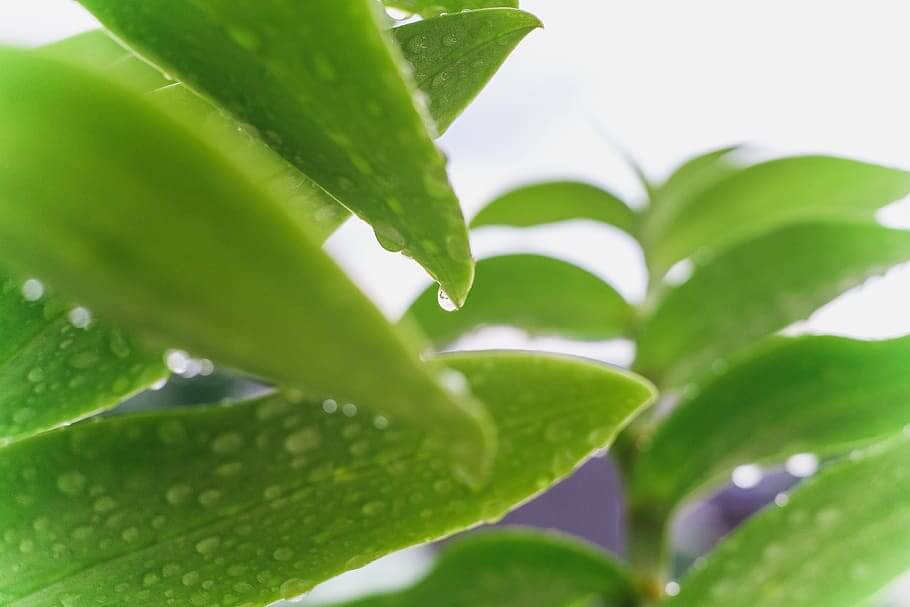Introduction
Plants are more than just decorative elements; they’re companions that bring life to our homes. This guide dives into the world of plant propagation, spotlighting nine houseplants that are not only beautiful but also incredibly easy to propagate. Whether you’re a seasoned green thumb or a budding indoor gardener, these plants offer the perfect blend of beauty and simplicity for your indoor oasis.
Why Choose Easy-to-Propagate Plants?
Benefits of Propagating Houseplants
Propagating houseplants is a delightful and practical way to expand your indoor garden. It’s a sustainable approach to plant care, allowing you to multiply your favorite species without additional cost. This method of gardening not only saves money but also nurtures a deeper connection with your plants, as you witness their growth and development firsthand.
Cost-Effective Gardening
Opting for plants that are easy to propagate means you can enjoy a diverse and thriving garden without breaking the bank. It’s a thrifty gardener’s dream, turning one plant into many and filling your home with greenery without the need for constant new purchases.
The Joy of Indoor Plant Propagation
There’s a unique joy in watching a tiny cutting sprout roots and grow into a full-fledged plant. This process not only enhances the aesthetic appeal of your home but also offers therapeutic benefits. The act of nurturing these cuttings can be a calming, meditative experience, providing a sense of accomplishment and a deeper appreciation for the wonders of nature.
Propagation Essentials
Required Tools and Materials
For successful propagation, the basic toolkit includes sharp scissors or pruning shears, clean containers (preferably transparent for water propagation), and a choice of mediums – water or soil. The simplicity of these requirements makes propagation accessible to everyone.
Sterilization and Cleanliness
Ensuring the health and success of your propagations hinges on cleanliness. Using sterilized tools prevents the spread of disease and infection, protecting both the parent and offspring plants. A routine of sterilizing your equipment before and after each use with rubbing alcohol or a bleach solution is recommended.
Choosing the Right Propagation Method
Water vs. Soil Propagation
Both water and soil propagation have their merits. Water propagation allows you to observe root development, which can be particularly gratifying and educational. However, transferring water-rooted plants to soil can sometimes be a delicate process. Soil propagation, on the other hand, might not offer the visual excitement of watching roots grow, but it often results in a smoother transition for the plant to its permanent home.
Plant Propagation Techniques
Understanding Nodes and Cuttings
Success in propagation largely depends on understanding where to make your cuttings. Identifying nodes – the points on a stem where leaves or branches grow – is crucial. These nodes are the hotspots for root development. When taking cuttings, ensure they include at least one node, and preferably a couple, to increase the likelihood of successful rooting.
9 Easy to Propogate Houseplants
1. Pothos (Epipremnum aureum)
Pothos, with its heart-shaped leaves and trailing vines, is a favorite among houseplant enthusiasts for its ease of care and propagation. To propagate, simply cut a piece of the stem just below a node. You can root these cuttings in water or plant them directly into soil. Within a few weeks, they should start developing roots, ready to be planted into their permanent pot.
- Pothos Propagation Steps:
- Cut a 10-15 cm stem below a node.
- Remove the lower leaves.
- Place in water or directly into soil.
- Pothos Propagation Tips:
- Use a clear container for water propagation to monitor root growth.
- Change the water weekly to prevent stagnation.
- Once roots are 3-4 cm, transfer to soil for continued growth.
2. Spider Plant (Chlorophytum comosum)
Spider Plants are renowned for their spiderette offspring, which dangle from the parent plant on slender stems. These can be snipped off and placed in water or soil, where they will quickly take root. Spider Plants are not only easy to propagate but also known for their air-purifying qualities, making them a dual-purpose houseplant.
- Spider Plant Propagation Steps:
- Snip off the spiderettes.
- Place the base of spiderettes in water or moist soil.
- Wait for roots to establish before transplanting.
- Spider Plant Propagation Tips:
- Ensure spiderettes have small roots before cutting.
- Keep the soil consistently moist but not waterlogged.
- Provide indirect sunlight for optimal growth.
3. Snake Plant (Sansevieria)
The Snake Plant, with its upright, sword-like leaves, is almost indestructible and propagates easily. Leaf cuttings can be placed in water or soil, where they will develop roots and eventually new shoots. This hardy plant is particularly forgiving for beginners.
- Snake Plant Propagation Steps:
- Cut a leaf into 5-6 cm sections.
- Allow the cuttings to dry and callus over.
- Plant them in soil, cut side down.
- Snake Plant Propagation Tips:
- Ensure each cutting has a clean, horizontal cut at the base.
- Use well-draining soil to prevent root rot.
- Be patient, as root development can take several weeks.
4. Aloe Vera (Aloe barbadensis miller)
Aloe Vera propagates through the development of pups or offsets, which sprout from the base of the parent plant. These can be separated and planted in their own pots, where they will grow into new Aloe plants. This succulent is not only easy to propagate but also known for its medicinal properties.
- Aloe Vera Propagation Steps:
- Carefully separate the pups from the mother plant.
- Allow the pups to dry for a day or two.
- Plant in a cactus or succulent mix.
- Aloe Vera Propagation Tips:
- Ensure pups have some roots attached when separating.
- Water sparingly until new growth is observed.
- Provide bright, indirect sunlight for best growth.
5. ZZ Plant (Zamioculcas zamiifolia)
The ZZ Plant is appreciated for its glossy, green leaves and tolerance of low-light conditions. To propagate, take a leaf cutting and place it in soil or water. It takes longer to root compared to some other plants but is worth the wait for its resilience and striking appearance.
- ZZ Plant Propagation Steps:
- Cut a leaf or a section of the stem.
- Let the cutting dry for a day.
- Plant in a well-draining potting mix.
- ZZ Plant Propagation Tips:
- Rooting can take longer; patience is key.
- Maintain a consistent temperature and humidity.
- Water sparingly until new growth appears.

6. Christmas Cactus (Schlumbergera)
The Christmas Cactus, beloved for its festive blooms, propagates effortlessly through segment cuttings. Simply take a piece consisting of two or three joined segments and plant them in moist soil. With adequate care, these segments will root and eventually bloom, especially around the holiday season.
- Christmas Cactus Propagation Steps:
- Twist off a segment or two from the stem.
- Allow the cutting to dry for a few days.
- Plant in a moist, well-draining soil mix.
- Christmas Cactus Propagation Tips:
- Propagate in spring for best results.
- Keep the soil consistently moist but not soggy.
- Provide bright, indirect light and avoid direct sunlight.
7. Jade Plant (Crassula ovata)
Jade Plants, with their thick, woody stems and fleshy leaves, are ideal for beginners. Propagation is as simple as taking a leaf or stem cutting and allowing it to dry for a day or two, forming a callus. Once callused, plant them in well-draining soil. Water sparingly until roots form, and you’ll have a new jade plant in no time.
- Jade Plant Propagation Steps:
- Snip off a healthy leaf or stem.
- Let the cutting dry and form a callus.
- Plant in a succulent mix and water lightly.
- Jade Plant Propagation Tips:
- Choose a well-lit spot but avoid direct afternoon sun.
- Water when the topsoil feels dry.
- Be gentle when planting to avoid damage to the callus.
8. African Violets (Saintpaulia)
African Violets, known for their velvety leaves and vibrant blooms, can be propagated from a single leaf. Cut a healthy leaf at the stem and plant it in moist soil. Keep the soil consistently damp and in a few weeks, new growth will emerge, eventually forming a new plant. Patience is key with African Violets, as they can take time to root and grow.
- African Violets Propagation Steps:
- Cut a healthy leaf at a 45-degree angle.
- Plant the stem in moist, fine potting mix.
- Cover with a plastic bag to create humidity.
- African Violets Propagation Tips:
- Keep the soil consistently moist but not waterlogged.
- Provide bright, indirect light.
- Be patient; rooting can take several weeks to months.
9. Peace Lily (Spathiphyllum)
Peace Lilies, with their elegant white blooms and lush foliage, propagate through division. Carefully separate a section of the plant, ensuring each division has roots and leaves. Replant in moist, well-draining soil and maintain regular watering. Peace Lilies not only add beauty to your home but also help purify the air.
- Peace Lily Propagation Steps:
- Gently remove the plant from its pot.
- Separate a section of the plant, ensuring it has roots.
- Replant in a fresh potting mix and water well.
- Peace Lily Propagation Tips:
- Choose a division with at least one leaf and root system.
- Keep the soil moist but not soggy.
- Place in a spot with bright, indirect light.
Propagation Troubleshooting
Common Issues and Solutions
If you encounter challenges like rotting cuttings or no root development, reassess the moisture levels and ensure you’re using the right propagation method for the plant. Sometimes, simply adjusting the environment or switching from water to soil (or vice versa) can make all the difference.
Indoor and housplant propogation Q & A
Popular questions when propagating houseplants and indoor plants.
What is the easiest house plant to propagate?
The Pothos, also known as Devil’s Ivy, is often hailed as the easiest houseplant to propagate. Its resilience and simplicity in rooting make it ideal for beginners. You can propagate Pothos by simply snipping off a stem just below a node and placing it in water or soil. The plant thrives in a range of environments, quickly developing roots and new growth, making the process rewarding and hassle-free.
What plants are easiest to grow from cuttings?
Spider Plants, Pothos, and Snake Plants are among the easiest to grow from cuttings. Spider Plants readily produce spiderettes that can be snipped off and rooted in water or soil. Pothos and Snake Plants can be propagated by taking stem or leaf cuttings, respectively, and placing them in water or a moist soil mix. These plants are forgiving and adapt well to new environments, making them excellent choices for propagation via cuttings.
What is the easiest indoor house plant?
The Snake Plant, or Sansevieria, is often considered the easiest indoor house plant. It’s highly tolerant of neglect, thriving in low light conditions and requiring minimal watering. The Snake Plant’s hardiness and ability to purify the air make it a popular choice for both novice and experienced plant enthusiasts seeking a low-maintenance indoor plant.
What plant propagates the fastest?
Among the common houseplants, the Spider Plant is known for its fast propagation. It quickly produces spiderettes, which can be easily rooted in water or soil. This rapid growth allows gardeners to see results in a short amount of time, making Spider Plants particularly satisfying for those interested in quick propagation.
What is the fastest growing indoor plant?
The Pothos is one of the fastest-growing indoor plants. It can adapt to various lighting conditions and requires minimal care, making it a prolific grower. With proper care, Pothos can extend its trailing vines quickly, adding lush greenery to indoor spaces in a relatively short period.
Can you propagate all indoor plants?
Not all indoor plants can be propagated successfully. While many common houseplants like Pothos, Snake Plants, and Spider Plants propagate easily, some plants, such as certain orchids or specialized varieties, require specific conditions and techniques for successful propagation. It’s important to research the specific needs of each plant species when considering propagation.
What helps cuttings root faster?
To help cuttings root faster, ensure they are placed in a suitable medium (water or soil), maintain optimal humidity and temperature, and provide indirect but adequate light. Using rooting hormone can also stimulate faster root growth. Keeping the environment stable and avoiding disturbances to the cuttings can further expedite rooting.
How do you multiply houseplants?
Houseplants can be multiplied through various methods such as cuttings, division, or layering. For cuttings, parts of the plant, like leaves, stems, or roots, are placed in soil or water to root and grow into new plants. Division involves separating a plant into multiple parts, each with its roots and foliage. Layering encourages new roots to develop while still attached to the parent plant, which can then be separated and replanted.
What’s the easiest plant to keep alive?
The ZZ Plant (Zamioculcas zamiifolia) is often considered the easiest plant to keep alive. It tolerates low light and infrequent watering, making it highly suitable for busy or forgetful plant owners. Its ability to thrive with minimal care and maintain a healthy appearance under less-than-ideal conditions makes it a top choice for an easy-care houseplant.
Do you water after using rooting hormone?
After applying rooting hormone to a cutting, it’s generally best to plant it directly into the chosen medium (soil or water) without additional watering. If planted in soil, water the cutting sparingly to maintain moisture but avoid overwatering, which can wash away the hormone and lead to rot.
Can you put cuttings straight into soil?
Yes, you can put cuttings straight into soil. This method is commonly used for many types of houseplants. The soil should be well-draining and moist. For some cuttings, applying a rooting hormone before planting can enhance the chances of successful rooting.
How long does it take to propagate indoor plants?
The time it takes to propagate indoor plants can vary widely depending on the plant species and the propagation method used. Generally, it can take anywhere from a few weeks to several months for a cutting to develop roots and start new growth. Some plants, like Pothos, root quickly, while others, such as the ZZ Plant, may take longer.
How many plants should you have in each room?
The number of plants you should have in each room depends on the space’s size, the plants’ light and air purifying needs, and personal preference. A general guideline for air purification is to have at least one large plant or several smaller plants for every 9 square meters of space. Ultimately, the choice should balance aesthetic appeal with the practical aspects of plant care and room conditions.
Conclusion
Embarking on the journey of plant propagation opens up a world of possibilities. With these nine easy-to-propagate houseplants, you’re well on your way to creating a flourishing indoor garden that brings joy, beauty, and a sense of accomplishment.
Additional recourses:
The Gardeners beginner guide on indoor plant care
The Plantify website


